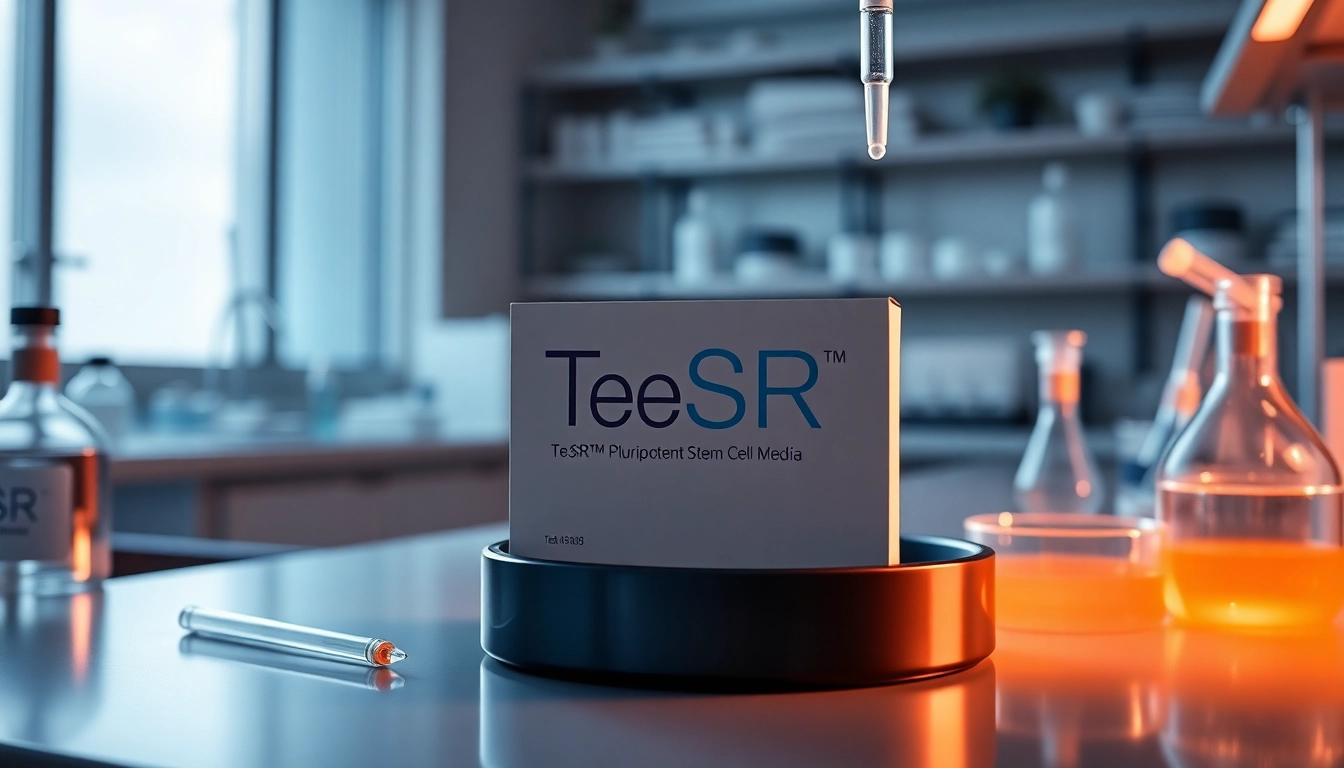Introduction to Cellulose Ethers
In the realm of modern chemistry and material science, Cellulose ethers play a significant role across various sectors. These amphiphilic polymers derived from cellulose, a naturally occurring polymer, are highly versatile and find applications in industries ranging from food and pharmaceuticals to cosmetics and construction. As a subclass of cellulose derivatives, cellulose ethers are critical due to their ability to modify physical and chemical properties of materials, enhancing functionality and usability in diverse applications.
What are Cellulose Ethers?
Cellulose ethers are formed by the etherification of cellulose, resulting in a range of derivatives that possess unique solubility and rheological properties. Through chemical reactions, hydroxyl groups of cellulose chains are replaced with ether functional groups, allowing these compounds to dissolve in water or organic solvents, depending on their structure. Common types include methylcellulose (MC), hydroxypropyl methylcellulose (HPMC), and carboxymethylcellulose (CMC), each with specific applications and characteristics that support their use in numerous products.
Historical Context and Development
The development of cellulose ethers traces back to the late 19th century when scientists first recognized the potential of cellulose as a versatile raw material. The innovation surged with the pioneering work of chemists who discovered ways to modify cellulose to create soluble derivatives. Initially used in the textile industry, the applications of cellulose ethers rapidly expanded as more industrial sectors began to leverage their unique properties. Over the years, continuous research and development have led to refined manufacturing techniques and improved understanding of cellulose ether behavior, driving their adoption in various innovative applications worldwide.
Why Cellulose Ethers Matter Today
Today’s global market dynamics reflect an increased focus on sustainable and functional materials. As industries seek greener alternatives and materials that can enhance product performance, cellulose ethers emerge as a preferred choice due to their biodegradable nature, versatility, and effectiveness. Their ability to serve multiple roles—ranging from thickening agents in food products to stabilizers in construction materials—positions cellulose ethers as critical components in fostering innovation and sustainability across various sectors.
Types and Properties of Cellulose Ethers
Common Variants of Cellulose Ethers
There is a wide array of cellulose ethers, each designed for specific applications based on their unique characteristics. The most widely used types include:
- Methylcellulose (MC): Known for its water solubility and thickening properties, MC is frequently utilized in food, pharmaceuticals, and cosmetics.
- Hydroxypropyl Methylcellulose (HPMC): Often used for its film-forming ability, HPMC finds applications in construction, as well as in drug delivery systems.
- Carboxymethylcellulose (CMC): This variant is particularly valued for its viscosity and stabilization properties in food products and personal care items.
Physical and Chemical Properties
The properties of cellulose ethers are dictated by the degree of substitution, molecular weight, and the specific substituents present. Key properties include:
- Solubility: Depending on the degree of modification, cellulose ethers can be soluble in water or organic solvents. This characteristic makes them suitable for a wide range of formulations.
- Viscosity: The ability to significantly increase viscosity at low concentrations is a hallmark property of cellulose ethers, making them effective thickening agents.
- Stability: Cellulose ethers exhibit excellent thermal and chemical stability, which is essential for many industrial applications that require resilience under varying conditions.
The Role of Cellulose Ethers in Different Industries
The functionality of cellulose ethers across various industries cannot be overstated. In the food industry, for instance, they act as stabilizers, emulsifiers, and thickening agents, ensuring product consistency and quality. In the pharmaceutical sector, cellulose ethers enhance drug solubility and bioavailability, contributing to more efficient drug delivery systems. Meanwhile, in construction, they serve as essential components in mortars and concrete, improving workability and performance. Their diverse utilities underline the critical nature of cellulose ethers in industrial applications, facilitating innovation and functionality.
Applications of Cellulose Ethers
Cellulose Ethers in Food Industry
In the food industry, cellulose ethers are widely utilized due to their ability to modify texture and enhance stability. For example, methylcellulose is particularly popular as a thickener and emulsifier in baked goods, dressings, and dairy products. It aids in achieving desired viscosity levels and prevents phase separation in emulsified products. CMC, on the other hand, provides texture improvement and moisture retention, essential for extending the shelf-life of baked goods.
An intriguing case study involves the use of cellulose ethers in gluten-free baking, where traditional binding agents often fail to deliver the desired texture. Here, methylcellulose has demonstrated remarkable performance in replicating the texture and elasticity expected from gluten, thereby enhancing consumer satisfaction in gluten-free products.
Cellulose Ethers in Pharmaceuticals
In pharmaceuticals, cellulose ethers fulfill myriad roles, including acting as binders, fillers, and dispersants. Hydroxypropyl methylcellulose is often found in tablet formulations, providing important functionalities such as controlled release and improved bioavailability. Its capacity to form films makes it an ideal candidate for coating tablets, ensuring a slower release of the active ingredients, which is particularly beneficial for sustained-release formulations.
Moreover, cellulose ethers are integral in topical formulations, where they contribute to the viscosity and spreadability of creams and gels. Their biocompatibility also qualifies them for use in drug delivery systems, assuring safety and efficacy in therapeutic applications.
Cellulose Ethers in Construction Materials
In the construction industry, cellulose ethers enhance the performance of various materials, from mortars to wall coatings. They provide superior workability and adhesion, which are crucial when applying plaster and other surface treatments. The addition of cellulose ethers results in reduced water requirements, improving the material’s performance while aiding in the prevention of cracking during the curing process.
Additionally, cellulose ethers impart improved anti-settling properties to cement-based formulations, ensuring that ingredients remain homogeneously mixed during application. Their multifunctional role underscores their importance in modern construction methodologies.
Best Practices for Using Cellulose Ethers
Formulation Techniques
To maximize the utility of cellulose ethers in various applications, precise formulation techniques are essential. Factors such as the choice of cellulose ether, the concentration used, and the method of incorporation all impact performance. For instance, it is critical to ensure even dispersion of cellulose ethers in formulations to achieve desired viscosity and stability. Pre-gelatinization or emulsification methods may improve solubility and efficiency, especially in challenging formulations.
Moreover, careful consideration of the pH level of formulations can affect the solubilization and performance of cellulose ethers. Conducting small-scale trials can help optimize formulations and avoid costly adjustments in large-scale production.
Safety Handling Guidelines
While cellulose ethers are generally regarded as safe for use, proper handling practices are imperative. Personal protective equipment (PPE) should be utilized to minimize exposure during the handling of powdered cellulose ethers, as inhalation of fine particulates may pose health risks. Additionally, adherence to safety datasheets and guidelines provided by manufacturers is critical for ensuring safe usage practices, particularly in large scale operations.
QA/QC Protocols for Cellulose Ethers
Quality assurance and control protocols for cellulose ethers involve rigorous testing to ensure they meet industry standards. Testing can include assessments of viscosity, solubility, and purity. Implementing robust QA/QC measures enables manufacturers to monitor raw materials and end products consistently, thereby ensuring functional integrity and compliance with regulatory requirements.
Future Trends in Cellulose Ethers
Research Innovations and Developments
The landscape of cellulose ethers is continuously evolving, driven by research in the fields of biotechnology and material science. Innovations include developing sustainable production methods that minimize environmental impact, such as using renewable resources for cellulose extraction. Researchers are also exploring novel derivatives of cellulose that attain improved performance characteristics, targeting underserved applications in various industries.
Sustainability and Environmental Impact
As industries push towards greener alternatives, cellulose ethers offer an environmentally-friendly option. Being derived from natural cellulose, they are biodegradable and non-toxic. Furthermore, ongoing research aims to enhance the sustainability of cellulose ether production processes, focusing on minimizing waste and energy consumption, thus supporting global sustainability goals.
Market Predictions and Growth Areas
The future market for cellulose ethers is poised for significant growth, spurred by demand in emerging sectors, including pharmaceuticals, personal care, and construction. As technological advances unlock new applications and improve existing products, cellulose ethers will continue to enhance product performance and consumer satisfaction. Emerging markets that prioritize sustainable and functional materials will be key drivers of this growth, reinforcing the relevance of cellulose ethers in a competitive and evolving global marketplace.



